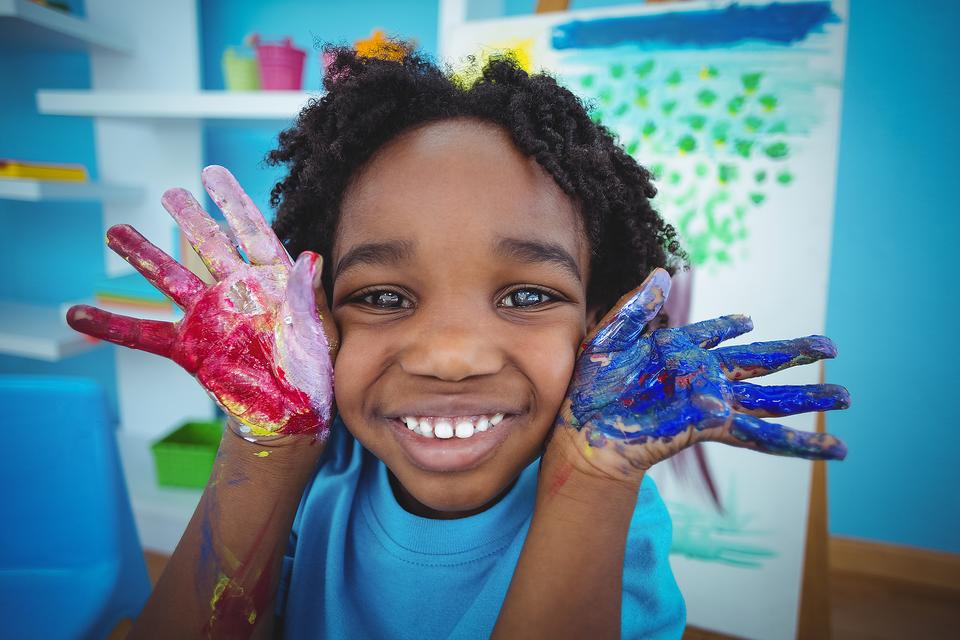Creative Art Play with Kids: Unleashing Imagination through Fun Activities
Creative Art Play with Kids: Unleashing Imagination through Fun Activities
Art play is an incredible way to foster creativity, fine motor skills, and self-expression in children. In the United States, parents and educators are increasingly using creative art activities to help children think outside the box while having fun. In this post, we’ll explore some fantastic creative art play ideas that you can do with your kids at home.
1. Why Creative Art Play Matters
Engaging in art play is more than just being creative—it’s about developing essential skills that benefit children throughout their lives. Here’s why it’s important:
- Fine Motor Skills: Enhances coordination through drawing, cutting, and painting.
- Imagination Boost: Sparks creativity and encourages original thinking.
- Emotional Expression: Allows children to express their feelings visually.
- Problem-Solving Skills: Challenges them to think critically and make decisions during art projects.
2. Top 10 Creative Art Play Activities for Kids
2-1. Collage Creations
- Materials: Old magazines, glue, scissors, large paper.
- Steps:
- Cut out interesting shapes, colors, and images.
- Arrange them on paper to create a collage.
- Glue down the pieces and let them dry.
- Benefits:
- Develops scissor skills and spatial awareness.
- Encourages creativity and storytelling.
2-2. Nature Art with Leaves
- Materials: Leaves, flowers, twigs, paint, paper.
- Steps:
- Collect natural items from outside.
- Dip leaves in paint and press onto paper.
- Create patterns or nature scenes.
- Benefits:
- Connects with nature and develops sensory skills.
- Promotes pattern recognition and fine motor development.
2-3. DIY Stamps from Vegetables
- Materials: Potatoes, carrots, paint, knife.
- Steps:
- Cut vegetables into shapes or patterns.
- Dip into paint and stamp onto paper.
- Experiment with different colors and shapes.
- Benefits:
- Encourages creative experimentation.
- Teaches about texture and printmaking.
2-4. Salt Painting
- Materials: Salt, glue, watercolor paints, paper.
- Steps:
- Draw designs with glue on paper.
- Sprinkle salt over the glue and shake off excess.
- Dab watercolor on the salt to see it spread and blend.
- Benefits:
- Combines science and art for an interactive experience.
- Develops fine motor skills through glue application.
2-5. Recycled Art Projects
- Materials: Cardboard tubes, bottle caps, fabric scraps, glue.
- Steps:
- Collect recyclable materials and brainstorm creative uses.
- Glue and assemble into sculptures or models.
- Benefits:
- Encourages environmental awareness.
- Enhances problem-solving and creativity.
2-6. Clay Play and Sculpting
- Materials: Air-dry clay, sculpting tools.
- Steps:
- Mold the clay into animals, shapes, or abstract art.
- Let it dry and paint once hardened.
- Benefits:
- Improves hand strength and coordination.
- Fosters imaginative thinking.
2-7. Storytelling Art
- Materials: Paper, markers, crayons.
- Steps:
- Draw a series of pictures that tell a story.
- Add captions or dialogue to enhance the narrative.
- Benefits:
- Combines language development with artistic creativity.
- Enhances sequencing and storytelling skills.
2-8. String Art Patterns
- Materials: Yarn, glue, cardboard.
- Steps:
- Dip yarn into glue and arrange in patterns on cardboard.
- Let it dry to create textured art.
- Benefits:
- Develops dexterity and spatial awareness.
- Introduces geometric patterns and design concepts.
2-9. Rock Painting
- Materials: Smooth stones, acrylic paint, brushes.
- Steps:
- Wash and dry the stones.
- Paint designs, animals, or patterns.
- Use as garden decorations or story rocks.
- Benefits:
- Encourages creativity and outdoor play.
- Builds fine motor control through precise painting.
2-10. Sensory Painting with Shaving Cream
- Materials: Shaving cream, food coloring, tray.
- Steps:
- Spread shaving cream on a tray.
- Add drops of food coloring and swirl patterns.
- Press paper onto the pattern and lift to reveal marbled art.
- Benefits:
- Stimulates tactile exploration.
- Develops color mixing skills.
3. Tips for Safe and Enjoyable Art Play
3-1. Use Non-Toxic Materials
- Always choose child-safe, non-toxic paints and glues.
3-2. Create a Dedicated Art Space
- Set up a designated area to reduce mess and make clean-up easier.
3-3. Encourage Creativity without Pressure
- Let kids explore ideas without worrying about perfection.
4. Final Thoughts
Creative art play helps children develop essential skills while expressing themselves freely. By providing a variety of artistic activities, parents can nurture their child’s imagination and self-confidence. Start today by choosing one of these simple art projects and watch your child’s creativity flourish!
Related Keywords
Creative art activities for kids, easy DIY art projects, art play ideas USA, fun crafts for children, enhancing creativity through art
Amazon best seller








Comments